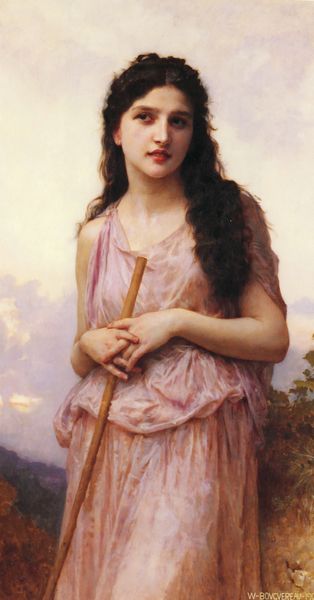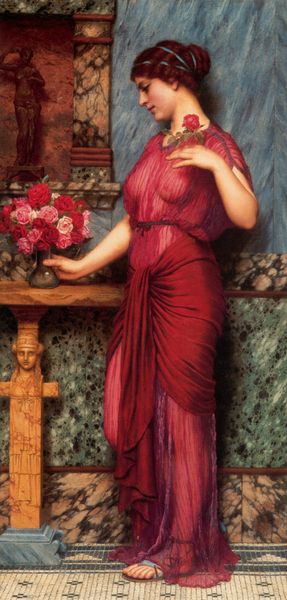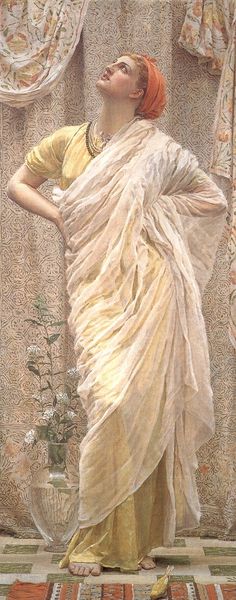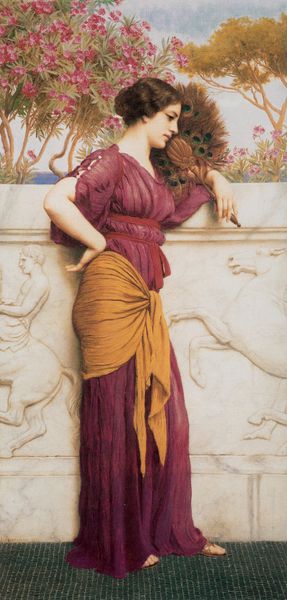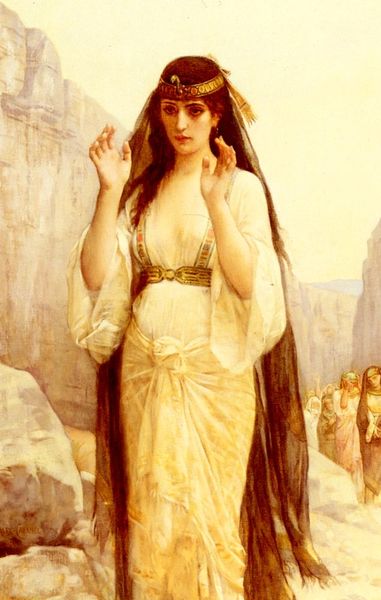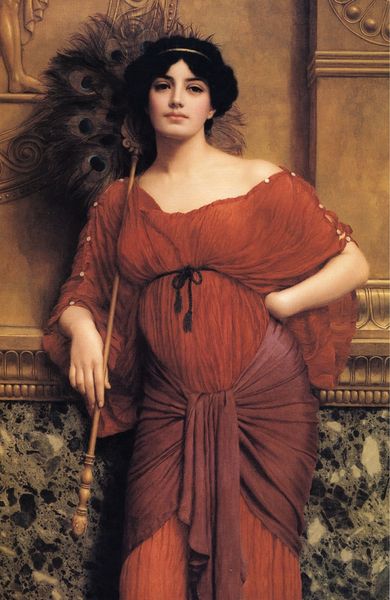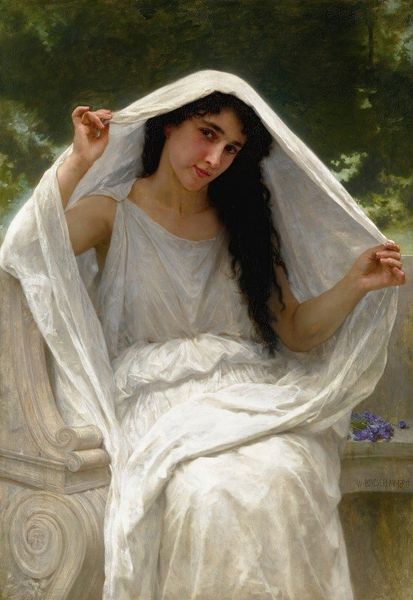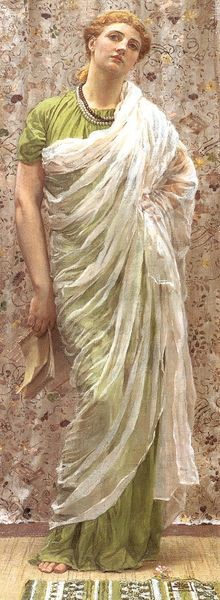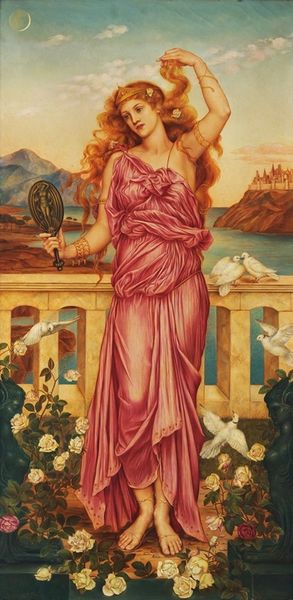
Young Priestess 1902
0:00
0:00
williambouguereau
Memorial Art Gallery (University of Rochester), Rochester, NY, US
Dimensions: 81 x 181 cm
Copyright: Public domain
Curator: What a pensive young woman. There’s an immediate stillness to her, like she's caught between breaths, or between worlds. Editor: Indeed. This painting is titled "Young Priestess," crafted in 1902 by William Bouguereau. A classically trained painter, Bouguereau was highly celebrated during his time, deeply engaged in Academic art and its related historical narratives. Curator: You know, that dreamy quality almost feels out of step with the intense historical rigor you often see associated with Academic painting. It feels less like history and more like, well, a very well-painted dream. What about the social and political context for this piece? What’s she thinking about, I wonder? Editor: Examining this artwork through a critical lens reveals interesting tensions. The “priestess” figure draws from an idealized classical past, a very specific Western construction laden with power dynamics that privileged whiteness, class, and a romanticized view of history often eclipsing non-Western narratives. The softness with which Bouguereau depicts her obscures any active exercise of her faith and agency as a historical person. Curator: Absolutely. Her beauty, especially in that light, flowing gown, it's captivating. But even though I'm drawn to the softness, I keep circling back to what's absent. She seems a bit, what’s the word… muted, like an echo of power rather than its actual embodiment. Bouguereau's skill with oil paints is obvious here. It’s that incredible balance between detail and ethereal effect. Editor: His approach naturalizes these systems of power and constructs her, subtly yet distinctly, as a passive object of reverence instead of a participant. How might this character embody lived historical and political forces, and where is she in terms of race, gender, class and social role? Curator: Looking at this "Young Priestess," then, feels less about glimpsing a lost world, and more about critically reflecting on how we construct images of authority. It’s more about interrogating the fantasy than admiring it. Editor: Yes, thinking of this priestess now prompts me to consider who holds power in any image. Curator: Indeed, art makes me ask more questions than it answers.
Comments
No comments
Be the first to comment and join the conversation on the ultimate creative platform.
